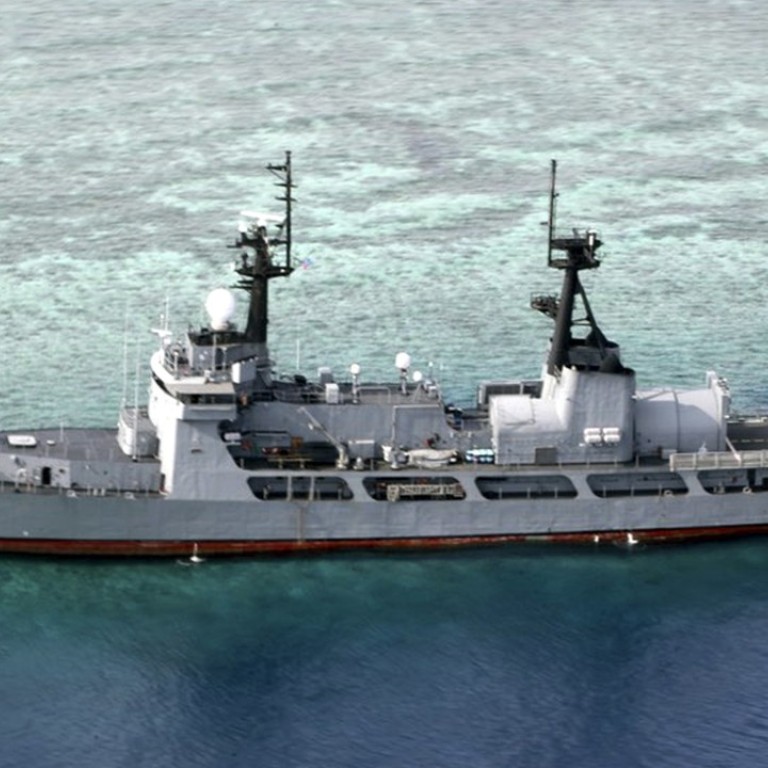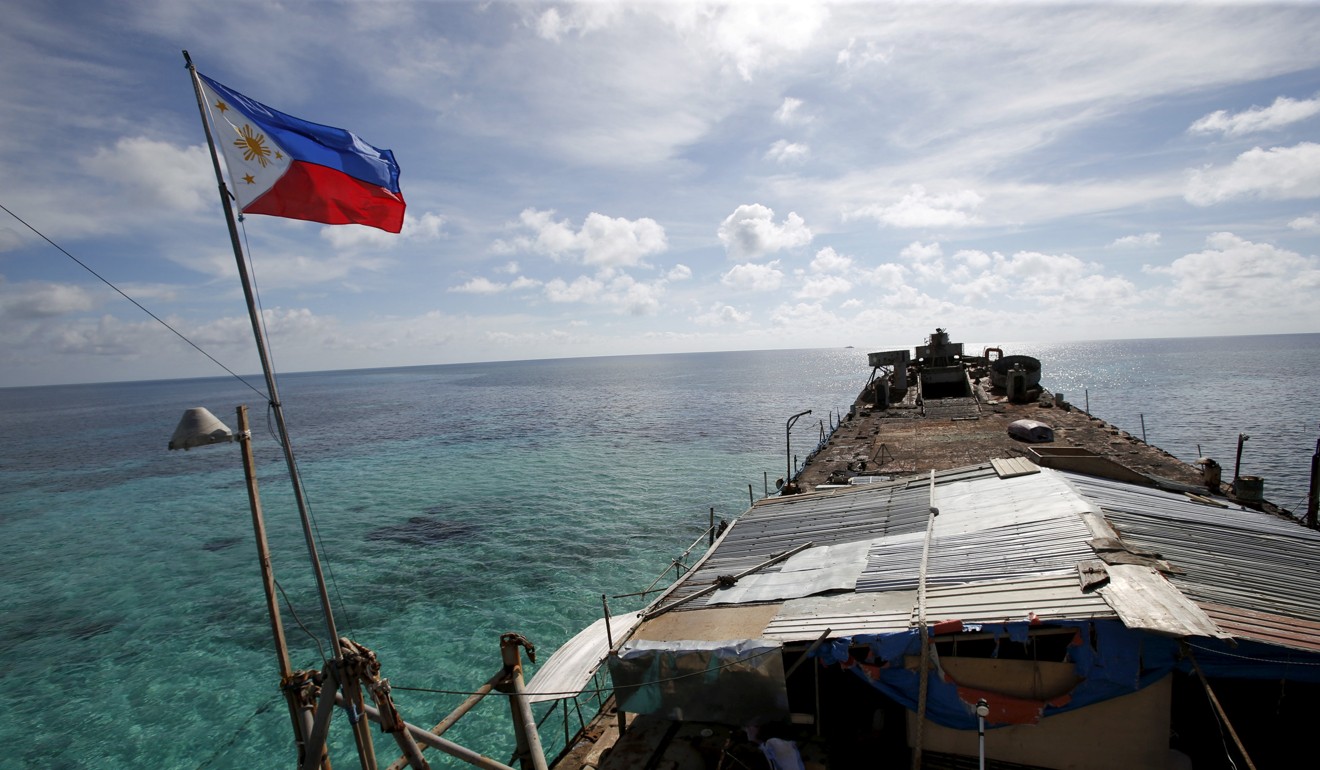
China ‘relieved’ Philippine warship towed from shoal in disputed South China Sea, analysts say
The removal of the Philippine Navy’s flagship from the Half Moon Shoal by two commercial tugboats is praised as ‘a good ending for all parties’
China is “relieved” to see a grounded Philippine Navy warship finally retrieved from a shoal in contested waters in the South China Sea, analysts said.
Two commercial tugboats were used late on Monday night to pull the BRP Gregorio del Pilar, the flagship of the Philippine Navy, from the shallow fringes of the Half Moon Shoal on the eastern edge of the disputed Spratly Islands, five days after it ran aground, the Philippine military said on Tuesday.
“Maintaining the status quo in the South China Sea is China’s key interest at the moment while the relationship with the US is strained,” said Ni Lexiong, a Shanghai-based military commentator. “This was a good ending for all parties.”
Beijing had sent coastguard vessels and a rescue boat to the site from nearby artificial island bases soon after the Philippine vessel ran aground during a routine patrol last Wednesday night, damaging its propellers.
China was wary about a recurrence of the 1999 grounding of a Philippine navy transport ship that effectively allowed the Filipinos to “occupy” the Second Thomas Shoal, turning it into a Philippine military outpost, according to analysts.
China has repeatedly demanded the removal of the now rusty BRP Sierra Madre from Second Thomas Shoal, which is claimed by the Philippines and China and lies about 110km (70 miles) north of the Half Moon Shoal.
Philippines extricates warship from South China Sea shoal
The Half Moon Shoal is yet to be controlled by any of the claimants. But many other contested islands and reefs of the Spratlys have been occupied by mainland China, the self-ruled island of Taiwan, the Philippines, Vietnam, Malaysia and Brunei.
Ni said sending the coastguard and rescue vessels was China’s way of showing it controlled the region’s administration. In addition, the combination of diplomatic efforts and putting Chinese forces on the site was designed to pressure the Philippines to retrieve its grounded warship “as soon as possible”.
“It was like saying to the Filipinos: if you don’t take action quick enough, we will do it,” Ni said.

Notably, the Chinese rescue boat Nan Hai Jiu 115 is one third larger by displacement than the BRP Gregorio del Pilar, a 3,250-tonne former US Hamilton-class high endurance cutter.
Declining China’s offer of help, the Philippine Navy instead hired two commercial tugboats which spend 10 hours rescuing the vessel, which will be towed to Subic, a coastal municipality in the Philippines, northwest of the capital Manila.
Beijing sends coastguard vessels after Philippine warship runs aground
“Inspection was ongoing as [of] this time in preparation for the towing of the vessel to Subic,” said Colonel Edgard Arevalo, a Philippine Armed Forces spokesman.
Since the grounding of the BRP Sierra Madre 20 years ago, China has strived to keep stranded vessels from staying too long in contested territory.
In March 2016, Chinese authorities towed away a Philippine fishing boat soon after it ran aground on Jackson Atoll in the Spratlys.

In an effort to manage the disputes in the South China Sea, through which 60 per cent of global shipping trade passes, China and the countries of the Association of Southeast Asian Nations, or Asean, reached a draft code of conduct last month.
Meanwhile, Philippine President Rodrigo Duterte has taken a softer view of the disputed region than his predecessor Benigno Aquino, who brought China before an international arbitration tribunal over the claims.
China rejects Duterte’s call to rethink its conduct in South China Sea
But the Philippines had not changed its position regarding China’s – and especially its military’s – presence in the South China Sea, said Zhang Mingliang, a Southeast Asia specialist at Jinan University.
“Even if the grounding was unintentional, to patrol in the region was a demonstration to China,” Zhang said.

